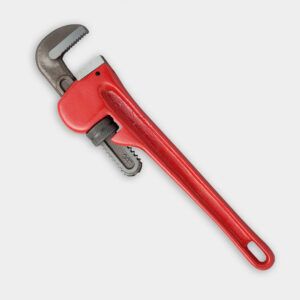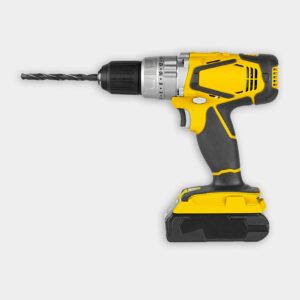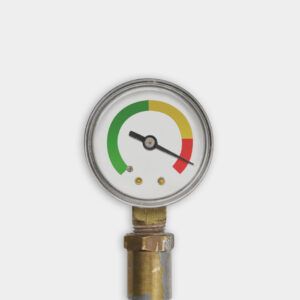We may be compensated if you purchase through links on our website. Our team is committed to delivering honest, objective, and independent reviews on home products and services.
Installing a natural gas grill can take your grilling experience to the next level and provide a convenient and reliable fuel source for your backyard gatherings. This upgrade eliminates the need for propane tank refills and ensures you never run out of fuel mid-cookout. In this guide, we’ll walk you through the process of installing a natural gas line for your barbecue grill, from assessing your home’s gas capacity to connecting your new grill. In the video above, Ask This Old House plumbing and heating expert Richard Trethewey demonstrates the installation process, highlighting key steps and safety considerations.
Assessing Your Home’s Natural Gas Capacity
Before beginning the installation process, you’ll first need to determine if your home’s natural gas system can support an additional appliance like a barbecue grill. This assessment ensures that you have sufficient gas flow to power all your existing gas appliances along with the new grill.
Locating the Gas Meter
The first step in assessing your home’s natural gas capacity is to locate the gas meter. Typically, you’ll find it on the exterior of your house, often near the front. The gas meter is where the main gas line enters your property from the street.
Checking the Meter Capacity
Once you’ve located the meter, you’ll need to check its capacity. Gas meters are rated in terms of “lights,” a holdover from when houses used gas lighting. Modern meters are typically rated as 5-light, 10-light, or 15-light. The meter number, usually found on the meter itself, indicates the capacity, which is stated in CFH, or cubic feet per hour. A higher number indicates greater capacity, which is needed for supporting additional gas appliances. In the video above, the homeowner’s gas meter shows a capacity of 210 CFH.
Calculating Current Gas Usage
To determine if you have enough capacity for a new gas grill, you’ll need to calculate your current gas usage. This involves:
- Listing all existing gas appliances in your home (furnace, water heater, stove, etc. )
- Noting the BTU (British Thermal Unit) rating of each appliance
- Adding up the total BTUs of all appliances
- Comparing this total to your meter’s capacity
In the video, Trethewey demonstrates this process, showing that the homeowner has about 400,000 BTUs of capacity, with current usage totaling about 275,000 BTUs, leaving ample room for a gas grill.
Planning the Gas Line Installation
Once you’ve confirmed that your home has sufficient gas capacity, it’s time to plan the installation of the new gas line. This step involves mapping out the route from your existing gas line to the location of your new grill.
Choosing the Tie-In Point
Select a suitable location to tie into your existing gas line. Ideally, this should be a point that’s easily accessible and close to the intended location of your grill. In many cases, you can tap into a line that supplies another appliance, such as a water heater or furnace.
Measuring the Route
Carefully measure the distance from the tie-in point to the desired location of your grill. This measurement will determine the length of pipe you’ll need for the installation. Remember to account for any turns or obstacles in the route.
Selecting the Appropriate Pipe Size
The size of the pipe you use will depend on the distance from the tie-in point to the grill and the BTU requirements of the grill. For shorter distances (less than 20 feet), a 1/2-inch black steel pipe is typically sufficient. Longer runs may require 3/4-inch pipe to ensure adequate gas flow.
Gathering Materials and Tools for Gas Line Installation
Before beginning the installation, ensure you have all the necessary materials and tools on hand, including:
Materials
- Black steel pipe in appropriate lengths and diameters
- Pipe fittings (tees, elbows, couplings)
- Gas shutoff valves
- Pipe joint compound
- Quick-connect hose fitting
- Flexible gas hose (if not included with the grill)
- Rust-resistant spray paint
Tools
- Pipe wrenches
- Cordless drill/driver
- Pressure gauge
- Pipe cutter (if custom lengths are needed)
- Deburring tool
- Soap solution for leak testing
Installing the Gas Line
The installation of a natural gas line for your barbecue grill is a complex process that requires precision and adherence to safety standards. It’s important to note that this is not a DIY project for most people—it requires the expertise of a licensed gas fitter to ensure proper installation and compliance with local codes, so you’ll most likely need to call in a professional for completion.
Shutting Off the Gas Supply
Before beginning any work, you’ll first need to shut off the main gas supply to your home. This step is typically done at the gas meter, where you’ll find a shutoff valve. Turn this valve perpendicular to the pipe to cut off the gas flow.
Tapping into the Existing Gas Line
With the gas supply shut off, you can now tap into the existing gas line. This process involves:
- Disconnecting the existing pipe at the chosen tie-in point
- Installing a tee fitting to create a branch for the new line
- Applying pipe joint compound to all threaded connections
- Tightening all fittings securely with pipe wrenches
Running the New Gas Line
Once the tee fitting is in place, you can begin running the new gas line to the grill location. This involves:
- Measuring and cutting pipe sections to the required lengths (or purchasing pipe sections in the appropriate lengths)
- Threading pipe sections together using pipe joint compound
- Supporting the pipe with galvanized-steel pipe hangers
- Installing shutoff valves at strategic points for safety (Trethewey recommends having one inside and one outside)
- Adding a “drip” near the outside connection to catch any rust or water that could be in the gas and potentially block the pipe
Drilling Through the Exterior Wall
To bring the gas line outside, you’ll need to drill a hole through the exterior wall. This step requires careful measurement and precision to ensure the hole aligns perfectly with the interior piping—Trethewey measured four times for this installation. Use a drill bit appropriate for the material of your exterior wall, and make sure the hole is large enough to accommodate the pipe and any necessary weatherproofing.
Testing and Finishing the Gas Line Installation
After the gas line is installed, test the system for leaks and complete the final steps of the installation.
Pressure Testing the System
Before connecting the grill, the new gas line must be pressure tested to ensure there are no leaks. To do this:
- Cap off the end of the new line
- Attach a pressure gauge to the system
- Pressurize the line (typically to about 3 psi)
- Observe the gauge for at least 40 minutes to ensure pressure holds
Leak Testing with Soap Solution
In addition to pressure testing, it’s also important to check all connections for leaks using a soap solution. Apply the solution to each joint and fitting, watching for bubbles that would indicate a gas leak.
Installing the Quick-Connect Fitting
Once the system passes the leak tests, install a quick-connect fitting at the end of the gas line. This fitting allows for an easy and secure connection of the grill’s gas hose.
Painting and Weatherproofing
To protect the exposed pipe from rust and weathering, apply rust-resistant spray paint to all exterior portions of the gas line. Additionally, take the time ensure proper weatherproofing around the point where the pipe exits the house.
Connecting and Using Your New Gas Grill
With the gas line installed and tested, you’re ready to connect and use your new natural gas grill.
Connecting the Grill
Most natural gas grills come with a flexible hose designed to connect to the quick-connect fitting you installed. Simply snap this hose into place to complete the connection.
Converting from Propane (If Necessary)
If you’re converting an existing propane grill to natural gas, you’ll need to change the orifices in the grill’s burners. These small parts regulate gas flow and are different for propane and natural gas. Many grill manufacturers offer conversion kits for this purpose.
Safety Checks Before Use
Before using your new gas grill for the first time you should:
- Double-check all connections
- Slowly turn on the gas supply
- Listen and smell for any signs of gas leaks
- Light the grill according to the manufacturer’s instructions



